Inside Rwanda army that has attracted anger and accolades

The Rwanda Defence Forces transformed from a liberation force into a professional force currently considered one of best resources to resolve conflicts in Africa.
It was Saturday 15h50 on September 1, 2012 when 357 Special Forces troops arrived at the Rwanda-DR Congo border. They had walked on foot carrying all their luggage and weaponry for 100km from eastern DRC region of Rutchuru. And you know what is more shocking – they had covered that distance in a single day!
Prior to this, the same army had twice waged war in its huge neighbour between 1996 and 2001 – in addition to ending a brutal insurgency in the Northwest of Rwanda in 1998. For all these years, allegations have emerged that the Rwandan army is the destabilizing factor in the African great lakes region. The unabating conflict in Burundi is another of the recent cases.
Welcome to the Rwanda Defense Forces, or RDF as it is simply known in Rwanda. A research in the archives of the elite United States Marine Corp University describes RDF as “one of Africa’s best resources to resolve conflicts similar to the one it currently faces in Darfur” Sudan.
“Rapidly progressing from a heritage of exile, revolution, and genocide, the RDF now represents a uniquely talented, professional military organization…” writes researcher Major Robert Beeland Rehder Jr.
So what explains this contrast? The destabiliser, according to some, is the admiration of an endless list of foreign governments. KT Press has gone beyond the news headlines to explore what the RDF has done or doing now that the media glosses through in news reports.
Stretching beyond independence from Belgium in 1962, the disruptive subject of ethnicity has been a central source of influence in the development of today’s Rwandan Defense Forces. Amidst this strife, founders of the RDF institutionalised a form of disciplined and adaptive warfare to rid Rwanda of divisive influence and re-establish the military as a source of protection and pride for the entire country.
What is it that the RDF is doing that has either not been done elsewhere? In other places around the continent, soldiers are a social menace – not in Rwanda. WHY? There is so much security in Rwanda that global polling group Gallup found women here feel safest than any other place on planet earth.
Here is the story of the Rwanda Defense Forces:
A BIG BANK
Whether it is a decorated General or a Private manning a small rural detachment, there is one place where both get the same treatment; a huge financial institution like no other in Rwanda. The Credit and Savings Society (ZIGAMA CSS) is a financial cooperative whose members include our men and women in uniform. Here in Rwanda it is only identified as ZIGAMA CSS.
It is the easiest bank to get a loan and it takes no more than a day. It does not matter how much money the member wants as long as they qualify. With the commercial banks, you would think they don’t operate in Rwanda.
All soldiers in the army are equal shareholders in ZIGAMA CSS. They all have an account where their salary is deposited each month. Savings are compulsory and take the form of a percentage directly deducted from pay each month, a kind of save as you earn model.
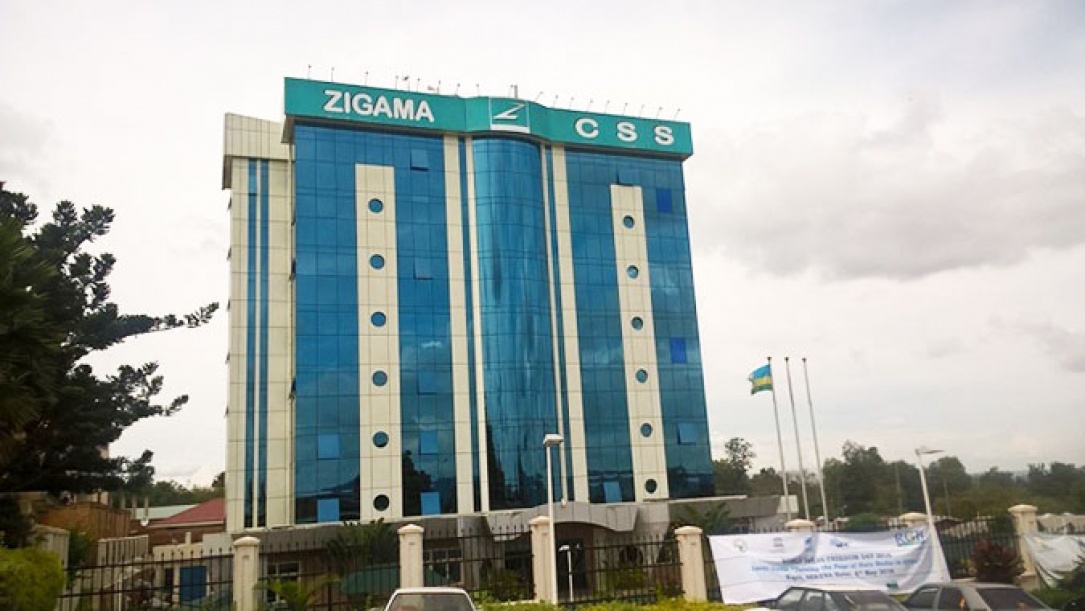
The Army bank commonly known as Zigama Css has established 20 branches across Rwanda
ZIGAMA CSS had grown to about Rwf100 billion ($150 million) in 2014 from Rwf10 billion ($14 million) in 2011.
The Bank now has 20 branches across the country; being the first in Rwanda to slash interest rates for its clients to 10 percent from 15 percent that has increased access to credit.
The bank is so big that it compares to one of the biggest and most spread out financial institutions in Rwanda; Bank of Kigali (BK). They are actually tied when it comes to annual profits.
Central Bank of Rwanda statistics say the ZIGAMA recorded a net profit of Rwf4.6 billion ($6.5million) in 2014, representing a 32% increase from Rwf3.2 billion ($4.5 million) in 2013. Whilst, its loan portfolio has grown from Rwf59.2 billion ($85 million) in 2012 to Rwf87 billion ($123 million) in 2014.
The bank has also accepted membership to all members of the National Police Force and the Rwanda Correctional Services (prisons). ZIGAMA CSS has also integrated technology in its service delivery since 2011 making it one of the most competitive financial groups in the country and with lower bad loans portfolio that is below 5 percent.
Its mortgage portfolio has been one of the drivers of growth in the country’s fragile real estate becoming among the services including low cost mortgage packages, soft loans and personal savings.
There is a never ending line of foreign armies that want ZIGAMA CSS expertise.
The main benefit from the state point of view is ZIGAMA CSS increases soldiers’ welfare while limiting the burden on the state budget, says Benjamin Chemouni, research fellow at the London School of Economics and Political Science (LSE).
“…Zigama-CSS helped integrate former enemies….by creating trust among ex-FAR and militia members. Mistrust toward the RPA was extremely high – many thought they would be cannon fodder for the RPF in Congo. Being able to pay these newly reintegrated fighters was key in building trust. After six months of fighting, a reintegrated soldier on leave would find his bank account with his full six months of salary. This soldier, when back with his family, would not be seen as the defeated fighter he once was but as a man still alive, wearing a uniform, with a sizeable sum of money. The ability of the Rwandan government to pay these people consistently turned these potential spoilers of peace into stakeholders in the new Rwandan army.”
PUBLIC HEALTH AND RESEARCH
The army’s Kanombe Military Hospital has been upgraded to small exclusive list of referral hospitals in the country.
At this facility, was born a rare circumcision device – ‘Prepex‘, a non-surgical bloodless tool. In collaboration with Rwanda, Circ MedTech, an Israel firm, developed the Prepex device which the two partners believed would help roll out male circumcision to minimize HIV spread in Rwanda and possibly in Sub-Saharan Africa.
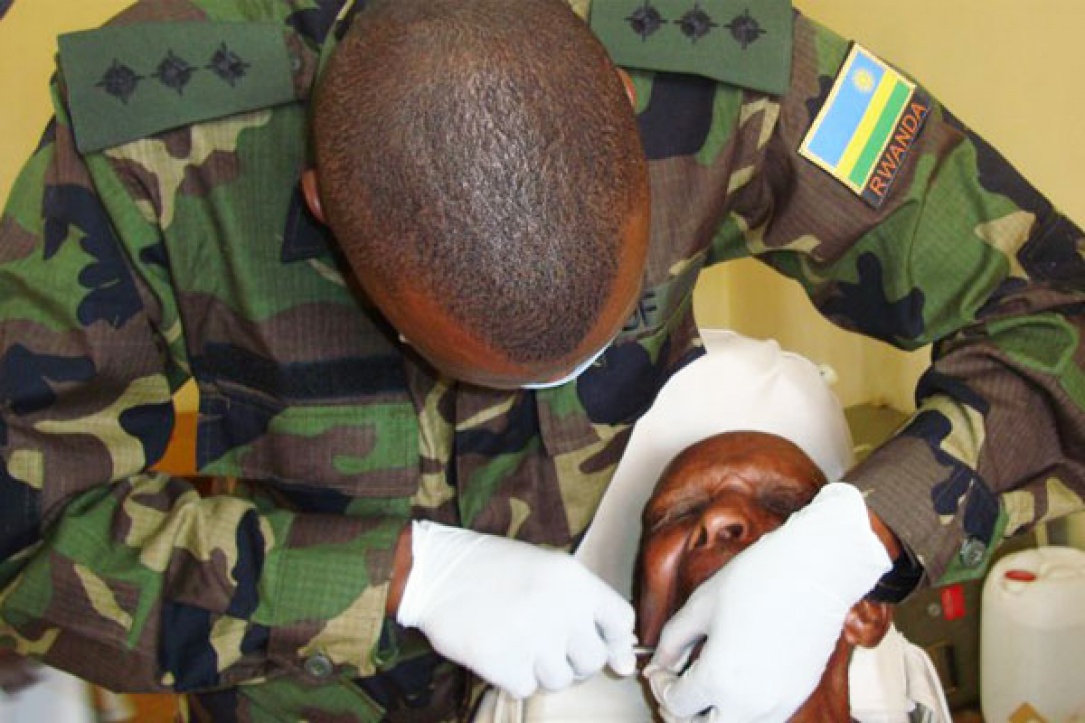
Thousands of Rwandans have been treated by military physicians under the ‘Army Week’ initiative
In 2013, Rwanda launched a nationwide campaign, targeting to circumcise over 700,000 men by 2016.
From a scientific perspective, Prepex is a device composed of elastic rings. During the operation, a doctor needs no injections or cutting. There is no need for anesthesia too.
The success of the device in Rwanda is attracting other countries.
Uganda, Kenya, Tanzania, Malawi, Mozambique, Zambia, Zimbabwe, Swaziland, South Africa, Lesotho, Indonesia and Botswana have sent medics to Rwanda for training and have successfully initiated the program.
When research showed male circumcision would prevent HIV/AIDS infection by up to 60 percent, the Rwanda Defense Forces were the first to set an example. Soldiers in their hundreds flocked to health centres for the cut. Within weeks, tens of thousands of ordinary Rwandans were staying for hours waiting for the service.
Shyira Hospital: Two rural regions in western Rwanda urgently needed a major hospital. Government settled on building a new Shyira hospital. But the drawback was it would take years to complete. The Ministry of Defense said they would deliver the $7m facility before mid-2017. Construction is on course to meet the deadline.
In the 2010 elections, incumbent Paul Kagame promised 1,548 health posts, covering the cells before 2017. There are a total of 2148 cells. As of 2016, 1100 had already been constructed and stocked. The Rwanda Defense Forces was at the frontline with 500 health posts using its own resources.
In another move, Medical experts at the RMH are training medical practitioners at every cell health post across the country for treating eye-cataracts.
PUBLIC INFRASTRUCTURE
Model villages
Rwandan Army men and women were the first to rescue residents of Rweru sector in Bugesera District who were in a high risk zone.
RDF constructed houses making the present Rweru model village that accommodates residents relocated from Mazane and Shalita islands.
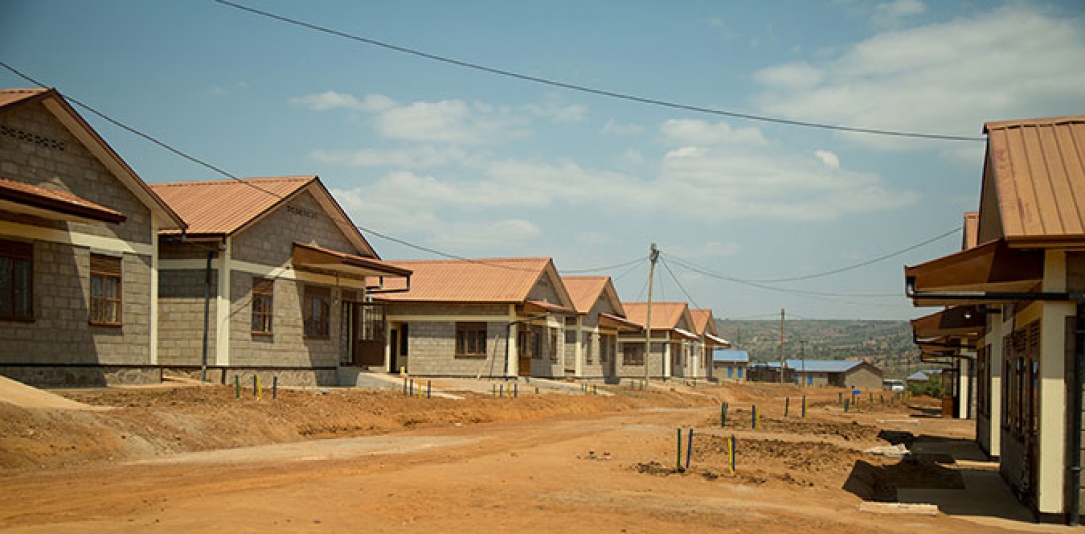
Built by RDF, this modern village in Bugesera district gave new life and new homes to former island population
In 2014, an estimated 48,000 people lived in high risk zones and many of them have been relocated.
Rweru model village is connected to electricity, plenty water supply, a modern market, a school and a 12-kilometre road network connecting it between Kagasa to Batima.
The Soldiers have promised Rwanda government that the newly placed model village will be replicated across the country; and it is already being implemented countrywide.
An estimated Rwf90 billion is the cost for the implementation of the model villages’ project. Countrywide but RDF executes projects as urgent and efficient as possible; dealing with the paperwork comes second.
Huye Smart Complex Car Park
The Rwf4.5 billion facility is an investment by Kigali Veteran Cooperative Society (KVCS), a cooperative of demobilised soldiers and members of the Reserve Force.
The park described by many as ‘possibly the most modern car park in Rwanda’ has a parking capacity of at least 200 vehicles.
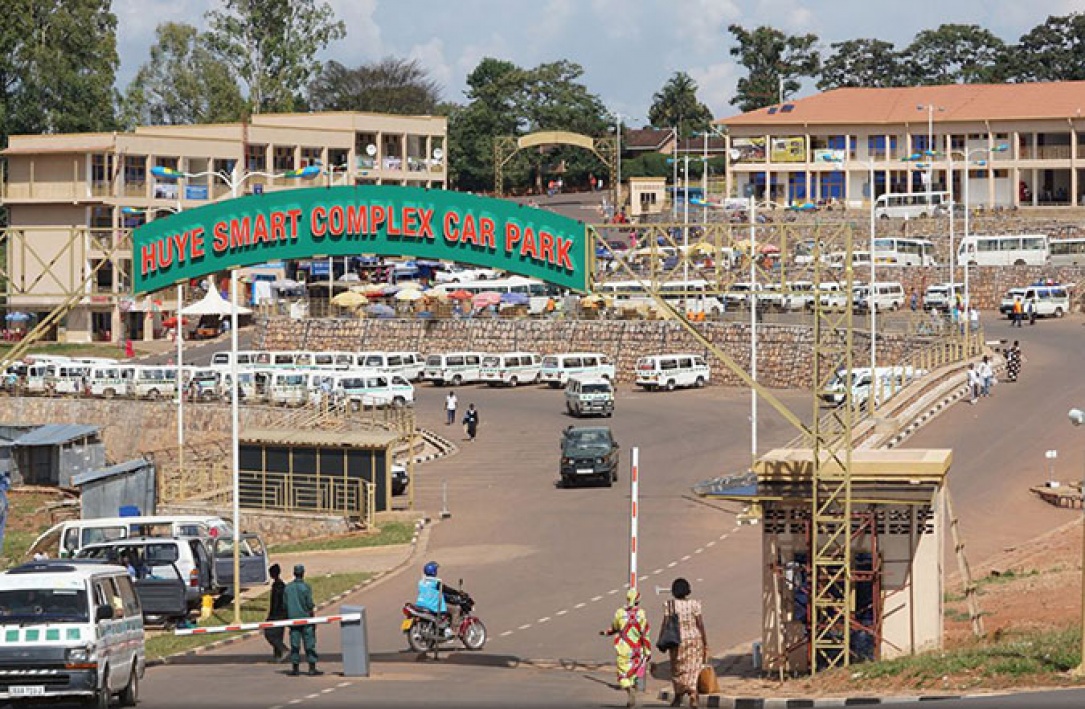
The Rwanda Defence Forces built this car park in Huye town
It includes three parking areas, several multi-storied commercial buildings with at least 81 shops, restaurants, administration blocks, a petrol station, car wash and internet cafes, among others.
A further plan is to equip the Huye Car Park with surveillance cameras for enhanced security as well as hi-speed wi-fi (already in place) for travelers.
14,000 EX-COMBATANTS
Rwanda Defense Forces’ objective after the war and genocide against Tutsi back in 1994 was to streamline demobilisation and integration of both its combatants and other armed groups particularly the FDLR
Through its Rwanda Demobilization and Reintegration Commission (RDRC) the force was able to reintegrate its ex combatants and other armed groups mainly the FDLR.
The commission was set up for demobilization, reintegration and reinsertion and support to social and economic reintegration of ex-combatants, including tailored support to the special needs of child, female and disabled ex-combatants.
According to the commission, 14,321 ex-combatants from Democratic Republic of Congo were voluntarily repatriated by end of 2015. Thousands have been demobilized, while hundreds have opted to be put back into the national army. Former enemies are enjoying the same benefits, especially from the ZIGAMA CSS bank.
Benjamin Chemouni, the LSE researcher writes; “The story of how Rwanda was able to pay its soldiers on time and give them access to finance is not only a nice story about the Rwandan military. It is a story of state-and nation-building, possibly a best practice for other post-conflict situations. Zigama-CSS created de facto solidarity between yesterday’s enemies. It was a gateway to a normal life, to a monetized life for many young fighters, whether from the RPA or the militias.”
COMMUNITY HOUSING AND SOCIAL INFRASTRUCTURE
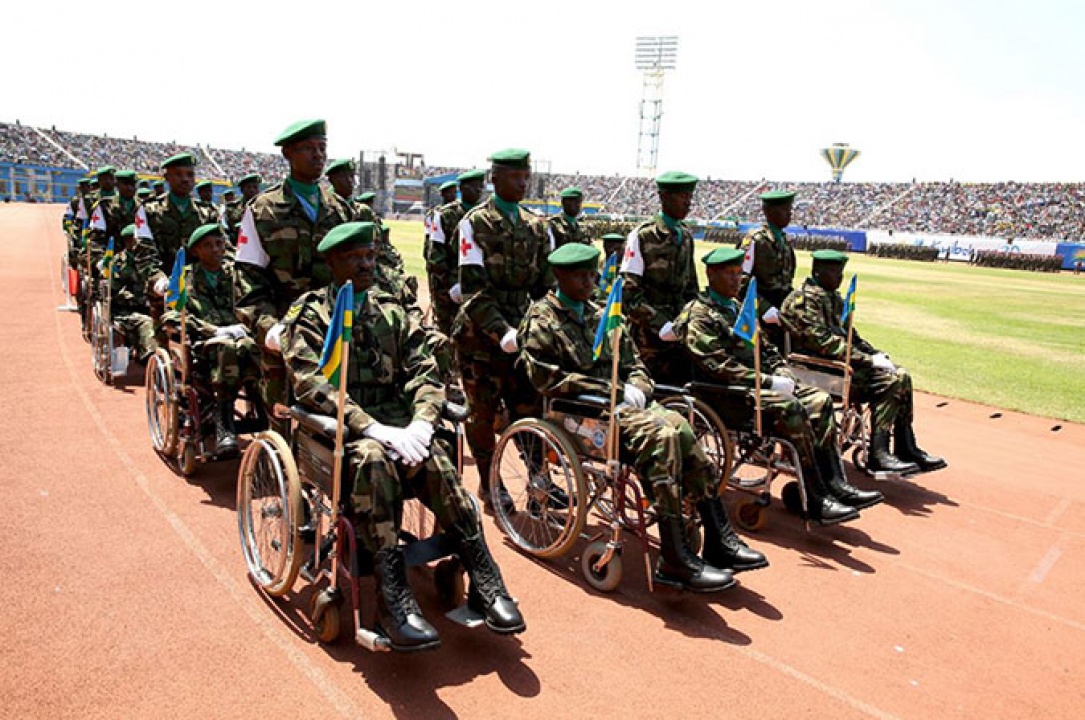
Ex-combatants taking part in 20th Anniversary of the liberation. They are provided with all the necessary social services including housing
The army has been able to construct planned villages (Imidugudu) for disabled ex-combatants, an initiative implemented through Rwanda Demobilization and Reintegration Commission (RDRC).
The commission also constructed over 125 houses indifferent sites, an initiative that has restored the lives of disabled ex combatants and their extended dependents who would have been left out to beg for a daily living.
RDF constructed a new model village located in Batima Cell of Rweru Sector. The village was entirely put in place by RDF in partnership with other Government Institutions to accommodate relocated families from Sharita and Mazane Islands high risks zones (in Lake Rweru) and to uplift the locals’ livelihood in general. About 400 people were relocated from these islands.
In the 1st phase of the Project, 104 families of more than 400 people from Sharita and Mazane Islands were relocated and settled in the Rweru model village.
The Gishambashayo Primary School and a supporting Health Post are already operational, with children and the sick alike, given satisfactory services in their neighborhood.
Other projects include construction of a modern market serving more than 80 thousand people in Gicumbi, Burera and counties in neighboring Uganda.
The RDF completed rehabilitation of 11 km Gatuna-Rubaya road, which will soon be extended and expanded to one of the main rural road networks in the District, connecting it with Burera District.
COMMUNITY OUTREACH
Umuganda
Rwanda has been known for its home grown solutions, from one cow per family, one dollar campaign to community work-Umuganda every month among others has painted positive the image of the country. But this is not worth without mentioning the RDF’s citizen program participation.
Through this, Members of Rwanda Defense Forces (RDF) work with civilians in community based activities which has increased army-citizen participation with several challenges such as local infrastructure, insecurity and other challenges are addressed during the community work.
For instance, November last year 2015 Umuganda RDF joined Kicukiro, Bugesera and Rwamagana Districts in the monthly community work-umuganda during the 16 days of activism against Gender Based Violence Campaign.
But again, the Army conducts a special Umuganda anywhere of an identified need across the country where other district officials join RDF; Rwanda National Police (RNP) and citizens in communal work aimed at promoting security and hygiene.
The RDF has also, as one of the efforts to export good practices of the country, initiated the Umuganda approach throughout all its peacekeeping missions. This has seen the force engaging with communities and solving most problems such as access to social amenities such as improved rural roads, proper sanitation among others.
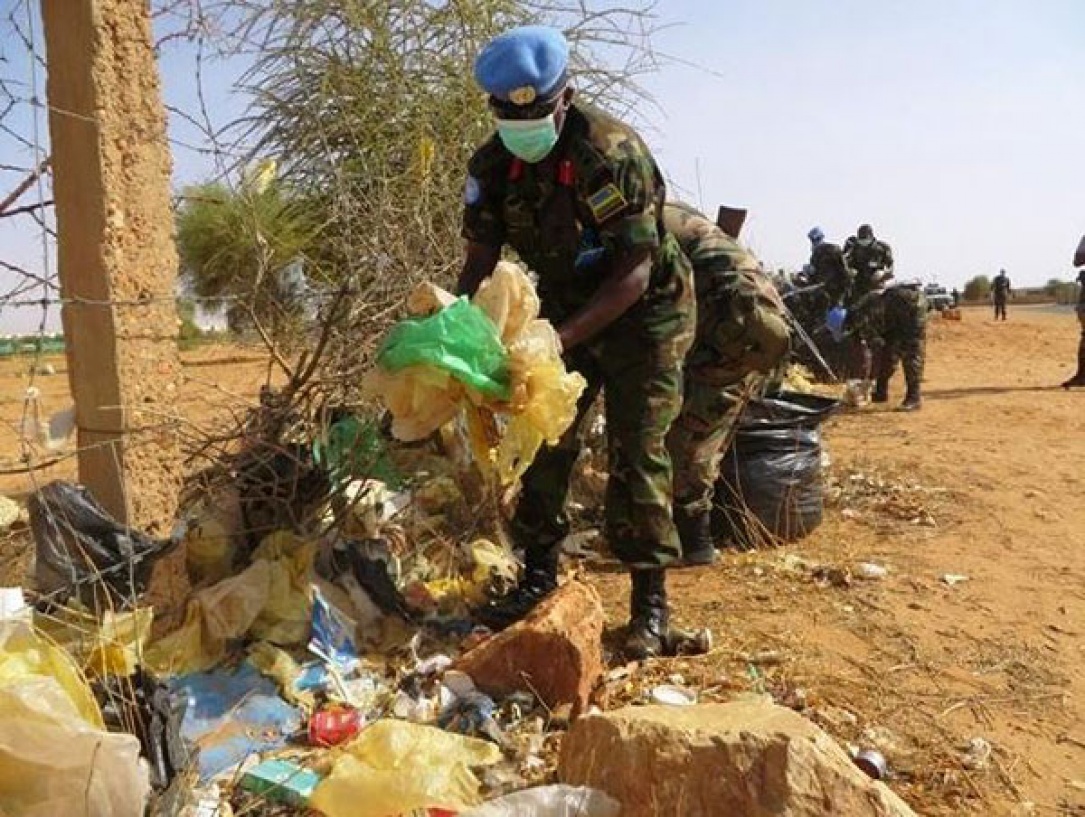
The RDF shares Rwanda’s home grown initiatives like community work-Umuganda to communities under peacekeeping protection
PEACEKEEPING
The United Nations Peacekeepers have been criticized for failure in some situations to protect the lives of citizens and their property. The critics say that instead of ensuring that citizens who are under their mandate are protected they sit back and watch. They have in many instances been referred to as ‘armed tourists’.
But this is not the case with Rwanda Defence Forces which is currently among the top contributing countries around the world. Taking on what is not possible to many and make it possible has made RDF transform the image of peacekeepers.
With 6,146 peace keepers around the world currently among them being 1,650 troops operating in the United Nations Mission in South Sudan (UNMISS), the RDF through its strategy of citizen engagement, engages citizens in territories under its control to participate in their security as well as ensuring regular patrols.
This has not only increased protection of the citizens but has created a dialogue platform which facilitates reconciliation and peace building, one of the core elements towards ending conflict.
With this, the United Nations has continued to credit RDF. For example, the CAR President is protected by Rwandan Soldiers who took over the CAR’s republican guards. The safety of that country’s head of State is now in the hands of Rwandan Army.
In fact, this made the UN Security Council to give a green light for peacekeepers to respond in case citizens or their bases are attacked, making history in peacekeeping.
This has also seen Peace keeping mission for Rwandan Soldiers been extended lately under the United Nations Multidimensional Integrated Stabilization Mission in the Central African Republic ‘CAR’ (MINUSCA)
Amid the progress, the United Nations (UN) identified RDF as a qualified Peacekeeping agent and has climbed to becoming the top five UN’s force contributing countries.
Serving the society has also been one of Rwandan peacekeepers top priorities whereas they constructed the Rwanda Level 2 UN Hospital in Central African Republic which since October 2015 has helped thousands of people to access medical services in the war ravaged central African country.
Rwanda peacekeepers (Rwanbatt 47) serving under the United Nations-African Union Mission in Sudan (UNAMID) handed over to the Community of Umkadada locality, Northern Darfur, a newly constructed fence at Noor Salaam Girls Primary School that hosts 463 pupils. The school is located at 185 Km East of Elfasher, the capital of Darfur.

